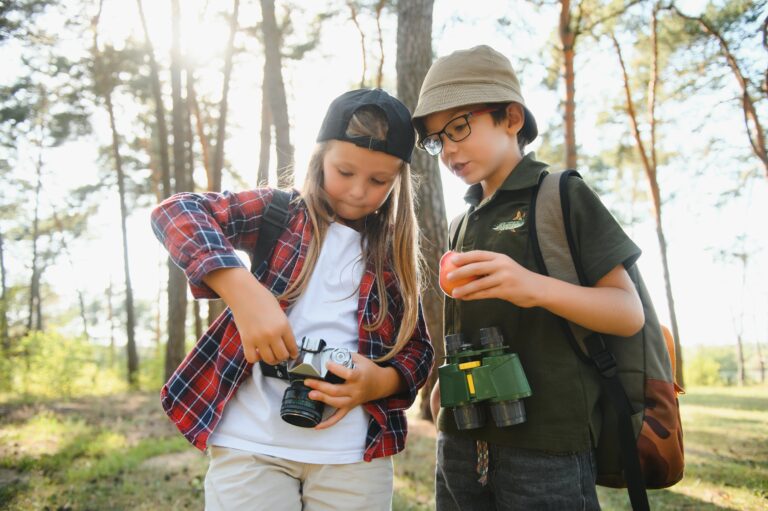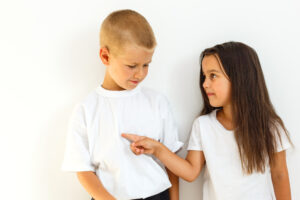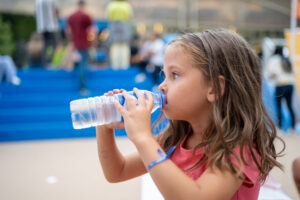In my journey as a childhood educator, I’ve always believed in the power of the great outdoors as an extension of the classroom.
Working with children between 3 months and 5 years old has taught me that nature is not just a backdrop for play, but a vibrant, interactive learning environment.
From my years of experience, I’ve found that outdoor learning is essential for children’s physical health, emotional well-being, and cognitive development.
Here are some nature-based learning activities that have been a hit with the young minds I’ve had the pleasure of nurturing.
The Magic of Nature-Based Learning
Nature offers endless opportunities for discovery, creativity, and growth.
In my work, I’ve seen that engaging children in outdoor activities fosters a deeper connection with the environment and enhances their observational skills.
1. Exploring the Senses
One of my favorite activities involves sensory walks. It’s a simple yet profound experience where we focus on one sense at a time to explore our surroundings.
Whether it’s listening to the sounds of birds, touching the textures of different leaves, or smelling the scents of various plants, sensory walks have been my secret weapon in teaching children to appreciate the nuances of the natural world.
2. The Science of Nature
The outdoors is a living laboratory. I’ve personally used activities like planting seeds and observing their growth over time to teach concepts of science and responsibility.
It’s amazing to see the wonder in children’s eyes as they watch their plants sprout and grow, a testament to the power of hands-on learning.
3. Cultivating Creativity and Imagination
Nature is a canvas for the imagination. I’ve found that outdoor art projects, such as creating mandalas from leaves, sticks, and stones, encourage creativity and a sense of beauty.
4. Storytelling Under the Sky
Combining storytelling with outdoor settings has been incredibly effective.
I’ve tried weaving tales that incorporate elements of our immediate environment, turning a simple storytime into an immersive experience.
It’s a method I’ve seen captivate even the most energetic of listeners.
5. Building and Designing with Nature
Constructing forts or fairy houses from natural materials not only taps into children’s imaginative play but also introduces basic engineering concepts.
This activity, which I’ve personally tested and refined, promotes problem-solving and teamwork among young learners.
6. Trash to Treasure Hunts
Organizing cleanup walks where children are encouraged to pick up non-natural items from the ground has been a practical way to teach about pollution and the importance of taking care of our planet.
It’s an activity that turns environmental stewardship into a treasure hunt.
7. Observing Wildlife Responsibly
Teaching children how to observe animals from a distance and respect their habitats has been a valuable part of our outdoor excursions.
It’s a lesson in empathy and conservation that I’ve found resonates deeply with young hearts and minds.
8. Listening to Nature’s Symphony
Encouraging children to close their eyes and identify as many sounds as they can hear outdoors has been a grounding exercise.
It teaches focus and awareness, and it’s been a technique I’ve found to bring moments of tranquility to even the busiest of days.
9. Nature Journals
Providing children with notebooks to draw or write about their outdoor experiences encourages reflection and expression.
This practice, which I’ve personally used, supports literacy development and offers a quiet moment to process the day’s adventures.
10. Cultivating Little Green Thumbs
Miniature gardens, or fairy gardens, offer children an opportunity to plan, design, and care for a small piece of the natural world.
I’ve personally guided children in selecting plants, arranging them in containers, and adding natural elements like stones, twigs, and miniature decorations.
It’s a magical process that not only teaches them about plant care but also allows for personal expression.
Final Thoughts
My years of working with children in the great outdoors have reinforced my belief in the importance of connecting young learners with nature.
The activities I’ve shared are just the beginning. Every tree, rock, and stream is an invitation to learn, play, and grow. Through my adventures in early childhood education, I’ve seen the transformative impact that nature-based learning can have on children’s development.
It’s a journey of discovery that nurtures not just knowledge, but a lifelong appreciation for the natural world.
As educators and caregivers, let’s continue to explore and cherish these moments under the open sky, for they are the seeds from which a deeper understanding and love for our planet will grow.












